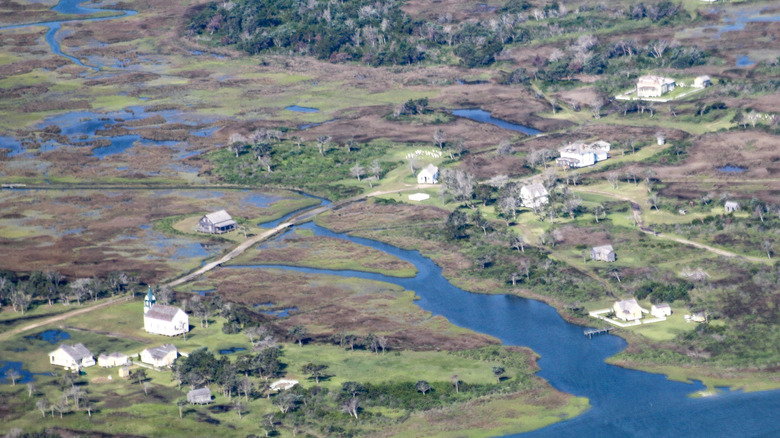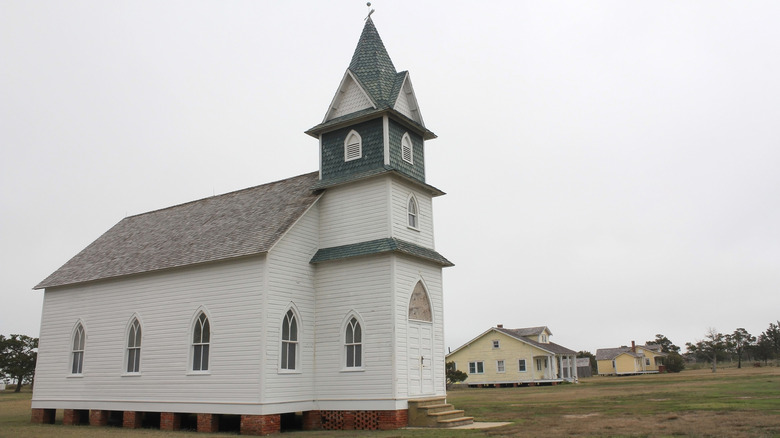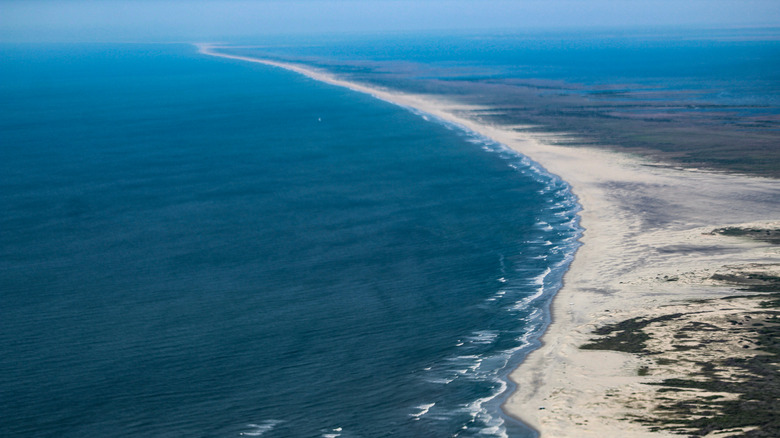Stepping into the uninhabited town of Portsmouth is like stepping back through time. Although its former residents have long since disappeared, the homes and buildings remain much as they were in this once bustling maritime village. Situated on Portsmouth Island, North Carolina, it’s part of the Cape Lookout National Seashore in the Outer Banks just off the coast. And just like another North Carolina beach you can’t get to by car, Portsmouth is only accessible by boat. If you’re coming from the mainland, it’s easiest to take a car-friendly ferry from the town of Atlantic — about three hours from Raleigh, NC.
There are no paved roads, but 4WD vehicles can navigate the terrain, leaving you free to roam the island at your own pace. If you’re bringing your own 4WD or RV, the ferry from Atlantic takes around 45 minutes and runs between four to eight crossings a day. It costs from $65, and you’ll be dropped straight on the beach. There are also Portsmouth Island boat tours if you prefer a more guided experience. The 20-minute trip from the neighboring island of Ocracoke leaves in the morning, giving you a few hours to explore before heading back in the afternoon. No vehicles are allowed in the village, and some parts of the beach may be closed at certain times of the year to protect wildlife.
While this ghost town may be missing human residents, the rest of the island is rich in wildlife. Several bird species call it home, and bottlenose dolphins and sea turtles are often spotted offshore. For outdoor lovers, this remote, coastal retreat is the ideal place for some peace and solitude amongst unspoilt beaches and the region’s unique maritime history.
How Portsmouth went from bustling port to ghost town
Portsmouth was established in 1753 and became a major shipping centre. For nearly a century, it thrived and became the largest settlement in the Outer Banks with 685 residents. When the Civil War came, many residents were forced to flee and never returned. This was a turning point in Portsmouth’s history. As the times changed, so did the trade routes. A deeper and less dangerous shipping channel further north became the hub of trade activity and railways replaced some Atlantic shipping channels, making Portsmouth’s once-vital role obsolete.
After that, fishing became the primary source of income for many families, but life in the once-thriving coastal community was forever changed. The population slowly dwindled until 1971 when the last two residents left for good, leaving Portsmouth the echo of the past it is today — much like some of the other breathtaking abandoned places on the planet. Thanks to the efforts of the National Parks Service and Friends of Portsmouth Island, many of the original buildings have been restored, and the village holds a proud spot on the National Register of Historic Places.




